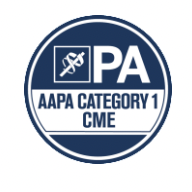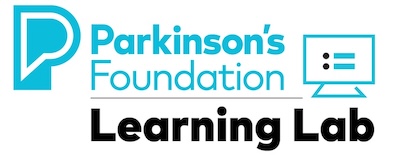Addressing Implicit Biases in Diagnosis and Treatment: Lessons from a Personal Story
 This course defines implicit bias and explains how it contributes to disparities in health outcomes.
This course defines implicit bias and explains how it contributes to disparities in health outcomes.
An illustration of this concept is presented through the lived experience of a person with Parkinson’s disease. Strategies for recognizing and addressing implicit bias in medical education and clinical care are discussed.
Syllabus | |
Addressing Implicit Biases in Diagnosis and Treatment: Lessons from a Personal Story Misrepresenting Race – The Role of Medical Schools in Propagating Physician Bias Delayed Parkinson’s Disease Diagnosis Among African Americans: The Role of Reporting of Disability Post-Knowledge Quiz Evaluation Credit and Certificate Claiming | |
Target Audience
This activity is designed to meet the educational needs of:
- Physicians
- Physician Assistants
- Registered Nurses
- Nurse Practitioners
- Social Workers
- Psychologists
Learning Objectives
At the end of this activity, learners will be able to:
- Define implicit and explicit bias;
- Identify sources of implicit bias;
- Evaluate the implications of bias from a patient's perspective; and
- Summarize how implicit bias relates to health equity.
Parkinson’s Foundation adheres to the ACCME’s Standards for Integrity and Independence in Accredited Continuing Education. Any individuals in a position to control the content of a CE activity, including faculty, planners, reviewers, or others, are required to disclose all relevant financial relationships with ineligible entities (commercial interests). All relevant conflicts of interest have been mitigated prior to the commencement of the activity.
Sharlet Anderson, PhD
Richard Huckabee
Ariane Carpentier, MD
Heshan Fernando, PhD
Jennifer Pickert, BSN, RN, EMTP
Rachel Rhinehart, PA-C
Lynssi Shanklin, MSW, LSW
Christine Hunter, RN, BSN
Lisa Hoffman, MA
Lauren Krasucki, PT, DPT, MPH, CPH
 In support of improving patient care, Parkinson's Foundation is jointly accredited by the Accreditation Council for Continuing Medical Education (ACCME), the Accreditation Council for Pharmacy Education (ACPE), and the American Nurses Credentialing Center (ANCC) to provide continuing education for the healthcare team.
In support of improving patient care, Parkinson's Foundation is jointly accredited by the Accreditation Council for Continuing Medical Education (ACCME), the Accreditation Council for Pharmacy Education (ACPE), and the American Nurses Credentialing Center (ANCC) to provide continuing education for the healthcare team.
Physicians
Parkinson’s Foundation designates this enduring activity for a maximum of 1.25 AMA PRA Category 1 Credit(s)™. Physicians should claim only the credit commensurate with the extent of their participation in the activity.
Nurses
The Parkinson’s Foundation designates this enduring material for a maximum of 1.25 ANCC contact hours. Nurses should claim only the credit commensurate with the extent of their participation in the activity.
Physician Assistants

Parkinson’s Foundation has been authorized by the American Academy of PAs (AAPA) to award AAPA Category 1 CME credit for activities planned in accordance with AAPA CME Criteria. This activity is designated for 1.25 AAPA Category 1 CME credits. Approval valid through September 1, 2026. PAs should only claim credit commensurate with the extent of their participation in the activity.
Psychologists
 Continuing Education (CE) credits for psychologists are provided through the co-sponsorship of the American Psychological Association (APA) Office of Continuing Education in Psychology (CEP). The APA CEP Office maintains responsibility for the content of the programs. 1.25 CE hours.
Continuing Education (CE) credits for psychologists are provided through the co-sponsorship of the American Psychological Association (APA) Office of Continuing Education in Psychology (CEP). The APA CEP Office maintains responsibility for the content of the programs. 1.25 CE hours.
Social Workers
 As a Jointly Accredited Organization, Parkinson’s Foundation is approved to offer social work continuing education by the Association of Social Work Boards (ASWB) Approved Continuing Education (ACE) program. Organizations, not individual courses, are approved under this program. State and provincial regulatory boards have the final authority to determine whether an individual course may be accepted for continuing education credit. Parkinson’s Foundation maintains responsibility for this course. Social workers completing this course receive 1.25 ASWB continuing education credits.
As a Jointly Accredited Organization, Parkinson’s Foundation is approved to offer social work continuing education by the Association of Social Work Boards (ASWB) Approved Continuing Education (ACE) program. Organizations, not individual courses, are approved under this program. State and provincial regulatory boards have the final authority to determine whether an individual course may be accepted for continuing education credit. Parkinson’s Foundation maintains responsibility for this course. Social workers completing this course receive 1.25 ASWB continuing education credits.
Available Credit
- 1.25 AAPA Category I CME
- 1.25 AMA PRA Category 1 Credit™
- 1.25 ANCC
- 1.25 APA
- 1.25 ASWB ACE
- 1.25 Participation

 Facebook
Facebook X
X LinkedIn
LinkedIn Forward
Forward